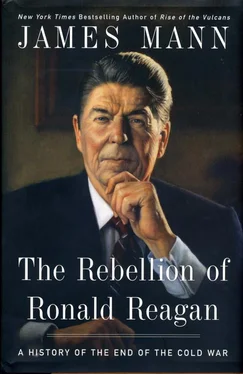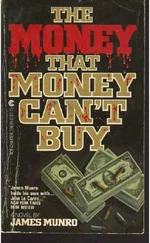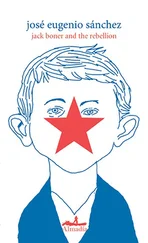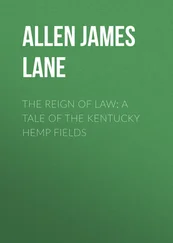Declassified State Department cables show that on June 18, 1987, less than a week after Reagan returned from Berlin, an East German diplomat in Washington invited a State Department official to lunch and proceeded to ask the meaning of the speech at the Brandenburg Gate. “He asked plaintively whether Reagan’s call to Gorbachev [rather than Honecker] to tear down the Wall was prompted by U.S. policy toward Berlin, or simply done to snub the GDR [East German] government,” the official reported.
In short, Honecker wasn’t willing to tear down the wall—but he would at least have liked to be asked. 8
The idea of a Soviet-American conspiracy was entirely in Honecker’s imagination. To be sure, by mid-1987, Gorbachev’s foreign policy was beginning to change; the best evidence had been the defense-oriented military doctrine announced at the Warsaw Pact session two weeks before Reagan’s visit. Gorbachev was also trying to forge a new relationship with West Germany as part of a larger effort to court Western Europe. Less than a month after Reagan’s trip to Berlin, Gorbachev played host to Richard von Weizsäcker, the West German president, on a visit to Moscow.
Yet none of these developments in mid-1987 amounted to a Soviet-American conspiracy against the East German regime. When Ronald Reagan called for the destruction of the Berlin Wall, Soviet officials and the Soviet press promptly condemned his speech in the same fashion as the East German regime did, calling Reagan’s words a return to the rhetoric of the Cold War. “West Berlin is a bad place for muscle-flexing,” said Valentin Falin, a leading Soviet expert on Germany. Pravda, the Communist Party newspaper, accused Reagan of crying “crocodile tears” and said the Western allies had, through their own hostile actions, made it necessary for East Germany to build the Berlin Wall. Izvestia , the official Soviet newspaper, reminded its readers that a year earlier, Gorbachev had signed a guest book at the Brandenburg Gate praising the East German border guards. 9Another Izvestia column warned that the existing division of Germany had helped to prevent military conflict between East and West. “While the German question remains open, the question of war in Europe also remains open,” he said. 10When von Weizsäcker visited Moscow, Gorbachev even refused to allow publication of the West German president’s comments about the Berlin Wall or about a divided Germany. The Soviet leader wanted to be tough, not conciliatory. “The Germans have to be treated this way,” Gorbachev told an aide. They respect firmness— ordnung [order].” 11
Although the Soviet Union itself still lined up behind Honecker, some of its Eastern European neighbors did not. On June 14, two days after Reagan’s speech, Hungarian television stations carried footage of the American president’s appearance at the Brandenburg Gate, including his appeal to tear down the Berlin Wall. Hungarian TV had also shown, a few days earlier, a report about East German protests during the rock concerts in West Berlin. One Hungarian explained at the time that Gorbachev’s policy of glasnost provided enough latitude for the government of Hungary to take occasional swipes at the aging leaders of East Germany and Czechoslovakia. 12Reagan’s Berlin speech wasn’t the cause of these divisions within Eastern Europe, but by reminding everyone of the wall, it exacerbated the underlying tensions and helped to bring them into the open.
For West Germans, Reagan’s speech was unsettling. German chancellor Helmut Kohl quickly endorsed Reagan’s speech, but other West German officials were less enthusiastic. “At the time, people [in West Germany] thought that Reagan was not supporting Gorbachev as much as he should,” asserted Karsten D. Voigt, a German specialist on the United States. “Americans all kept appealing to freedom, but we felt it’d be stronger if they had cooperated more with Gorbachev.” 13
“The subject of the wall was a taboo, in a sense,” recalled Hans-Otto Bräutigam, West Germany’s representative in East Berlin. “Everybody considered the wall unbearable, uncivilized—but you couldn’t do anything about it. The subject was something one didn’t want to touch, because it was so emotional. For West Berliners, Reagan’s speech employed language they had really missed for some time. His words had a direct appeal. But in general, no one in Germany at that time believed there was a chance to open the wall in the near future.” 14
Hildegard Boucsein was sitting in one of the front rows during Ronald Reagan’s speech, a privilege she enjoyed as an aide to the mayor of West Berlin. When Reagan called upon Mikhail Gorbachev to tear down the Berlin Wall, one German next to her muttered that he was a “nationalist dreamer” and another said he was indulging in fantasy. 15
Back in the United States, Reagan’s appeal to tear down the Berlin Wall was not taken particularly seriously. The focus of news coverage at the time was on the impending congressional hearings into Iran-Contra, not the Soviet Union or East Germany.
Within hours after Reagan’s speech, Henry Kissinger appeared on television to deliver his gloomy, gravelly-voiced judgment. Asked whether it was realistic to hope the Soviet Union might ease its policies toward Berlin, Kissinger replied, “They might relax them to some extent, but they won’t tear down the wall.” Americans should in any event not become overly excited about Gorbachev’s reforms, Kissinger told ABC’s Good Morning America . “The purpose is to make the Soviet Union stronger.” 16
In an editorial a few days after Reagan returned from Europe, the New York Times compared Reagan to the Music Man, trying to replay the old tunes in River City. In the Washington Post , columnist Jim Hoagland wrote of Reagan’s speech: “History is likely to record the challenge to tear down the wall as a meaningless taunt, delivered as a grand gesture that was not conceived of as part of a coherent policy.” 17
The State Department, which had for so long opposed the speech Reagan gave in Berlin, quickly sought to explain it away and to defuse its impact. State Department officials wrote what is called a “press guidance,” a series of internal talking points for senior U.S. officials and press spokespersons to use in answering reporters’ questions. On the day Reagan spoke at the Brandenburg Gate, the State Department instructed its officials to say: “The speech speaks for itself. We are consulting with our British, French and German allies.” The press guidance explained that Reagan had “suggested possible steps to open up East-West contacts within Berlin to expand Berlin’s role as a world meeting place.” State Department officials were instructed to tell reporters that “we call on the other side to join with us in overcoming barriers and opening Berlin still further to all of Europe, East and West.” Nowhere in the State Department’s press guidance did the words Berlin Wall appear, or the phrase tear down, or the name Gorbachev . 18
During the following months, State Department officials busied themselves with the task of pursuing the small, practical steps they called Reagan’s Berlin Initiative. By this they meant not tearing down the wall, but the incremental steps concerning Berlin they had originally proposed should be at the heart of Reagan’s speech.
American diplomats dutifully explored with other governments the possibilities for international conferences that could be held on both sides of the Berlin Wall. Could the Commission on Security and Cooperation in Europe (CSCE), an organization with members in both Western and Eastern Europe, meet at the same time in both West and East Berlin? “Embassy Berlin strongly supports… recommendation to propose Berlin both sides of the Wall for the next CSCE follow-up meeting,” cabled a U.S. diplomat. The Soviets soon threw cold water on this proposal. How about having the Olympics in both sections of Berlin? That idea provided the fodder for diplomatic cables and meetings; it did not take hold either. 19
Читать дальше












